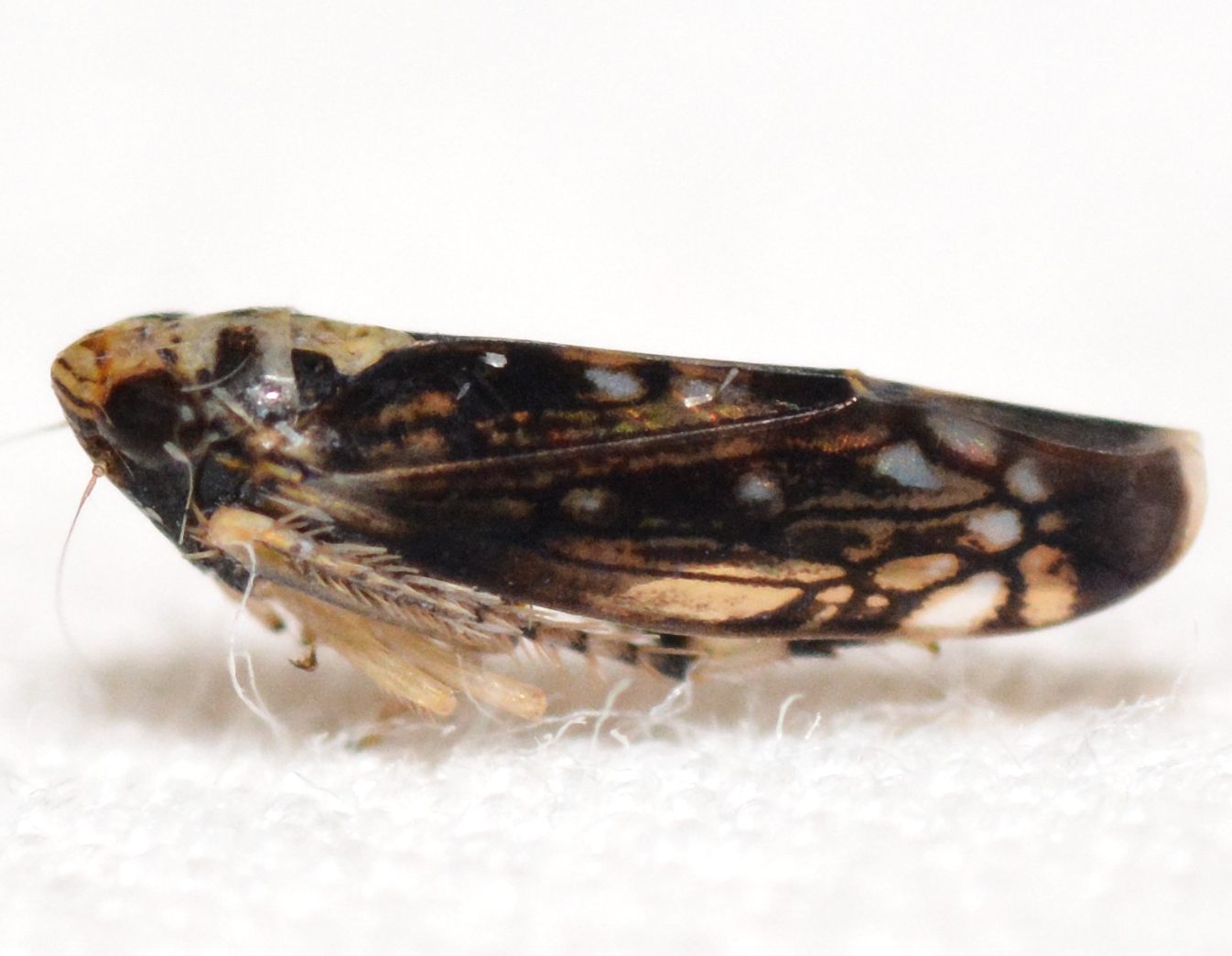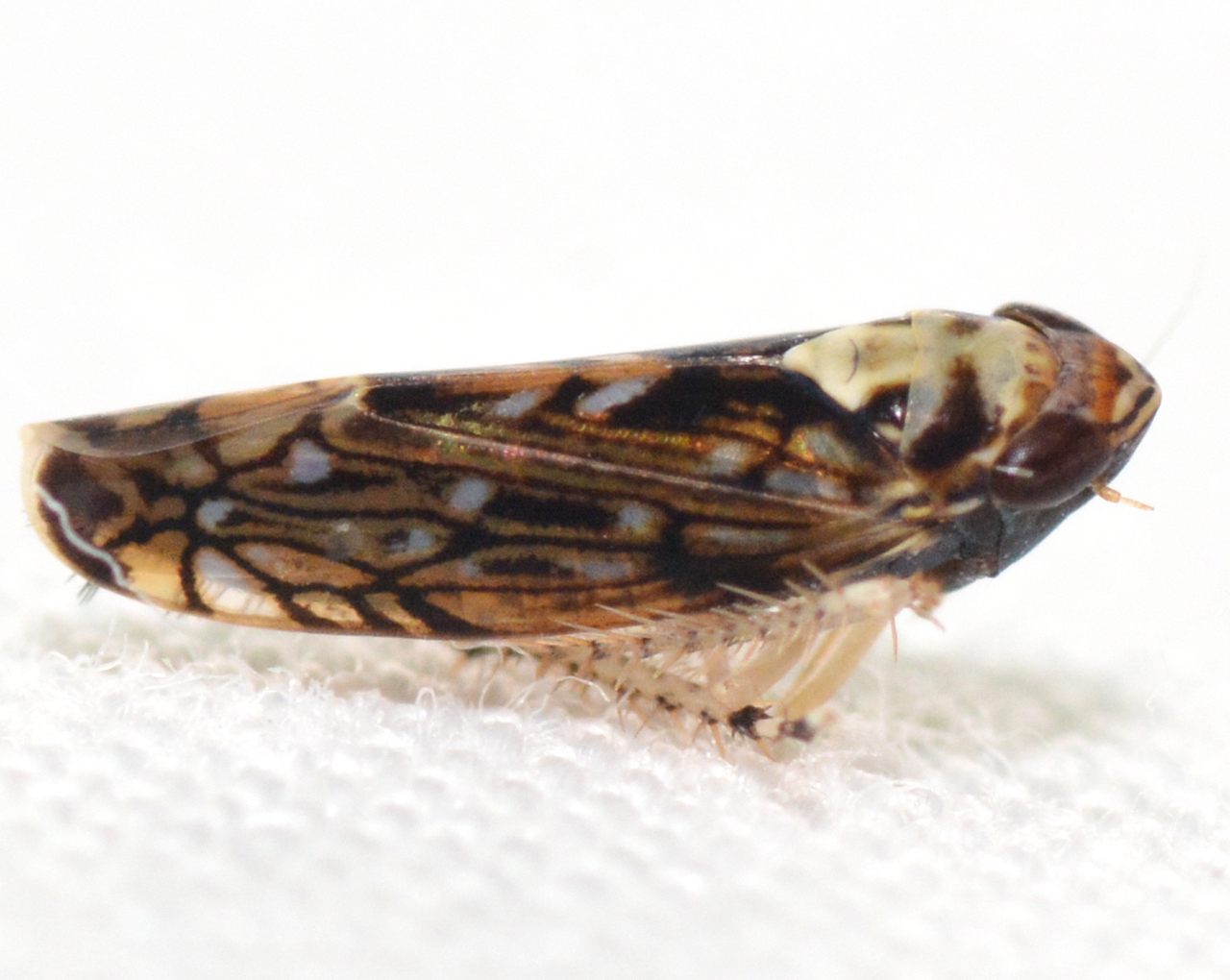| description |
A rather dark Scaphoideus species, ranging from light to dark brown overall. The crown is white to yellowish white with a thin, dark anterior marginal line (the line may be broken or complete) and a brown to mandarin orange wavy band transversing the width of the vertex in front of the eyes (this band may be broken medially). The eyes are a very dark reddish color, sometimes with a white longitudinal line. The face is dark to light brown with the central area lighter, and there is a dark brown line below the crown margin. The pronotum may be a grayish-white color with a posterior transverse arc-shaped dark brown band and usually three equally spaced pairs of dark brown dots near the anterior margin; or the pronotum is white with an oblique dark brown bar on the lateral areas and a wrinkled dot at the anterior margin of the pronotum, sometimes with two medial anterior dark brown dots. The scutellum ranges from cadmium orange to deep yellow, with dark brown to blackish anterior lateral areas. The wings are dark, with an anterior dorsal area that is dark brown and the remaining areas concolorous with few white spots; the venation is brown. The coxae are dark brown, the rest of the legs are yellowish-brown. The abdominal venter is dark brown with only minor yellowish-white areas laterally. The male subgenital plates are dark brown and are long, narrow and bluntly rounded with large setae in the posterior medial area. The female pregenital sternite is yellowish to yellowish-white anteriorly, dark brown posteriorly; the posterior margin is produced medially, giving the sternite a triangular, pointed shape. Adult males are 5.0-5.9 mm long (can reach as small as 4.8 mm per specimens below), while females are 5.2-5.7 mm. (Barnett 1976)
For more images of this species, see: BG. |
| comments |
This species has been confused with S. melanotus online. The two species may have a similar thoracic and vertex pattern (though with distinctive differences), but differ in a couple notable ways. In S. melanotus, the face is a velvety black color, whereas in S. pullus the face is brown to dark brown, typically with a paler yellowish-brown central area. Additionally, the wings of S. pullus are largely dark brown, whereas in S. melanotus there is an interrupted longitudinal whitish band that continues down the commissure, contrasting with the rest of the wing which is mostly blackish and brown colored. Additionally, the female pregenital sternite slightly differs between the two species: in melanotus, the posterior projection tapers and has a defined median notch, whereas in pullus the sternite lacks any notch and does not taper. |
Species Photo Gallery for Scaphoideus pullus No Common Name |
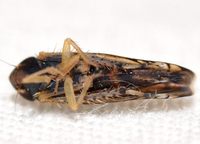 | Photo by: Kyle Kittelberger
Ashe Co.
Comment: collected by Bo Sullivan; female, |  | Photo by: Kyle Kittelberger
Ashe Co.
Comment: collected by Bo Sullivan; female, 5.2 mm |
 | Photo by: Kyle Kittelberger
Ashe Co.
Comment: collected by Bo Sullivan; female, 5.2 mm | 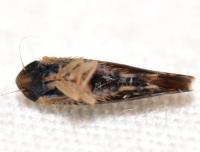 | Photo by: Kyle Kittelberger
Ashe Co.
Comment: collected by Bo Sullivan; 3 male |
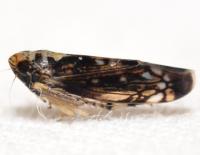 | Photo by: Kyle Kittelberger
Ashe Co.
Comment: collected by Bo Sullivan; 3 male, 4.8 mm |  | Photo by: Kyle Kittelberger
Ashe Co.
Comment: collected by Bo Sullivan; 3 male, 4.8 mm |
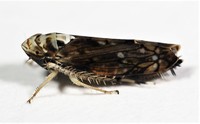 | Photo by: Rob Van Epps
Mecklenburg Co.
Comment: Attracted to UV light. | 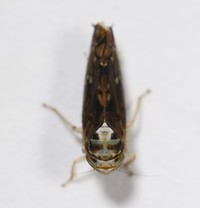 | Photo by: Rob Van Epps
Mecklenburg Co.
Comment: Attracted to UV light. |
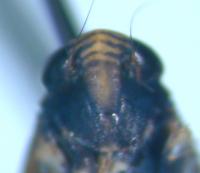 | Photo by: Bo Sullivan
Ashe Co.
Comment: 5.5 mm |  | Photo by: Bo Sullivan
Ashe Co.
Comment: 5.5 mm |
 | Photo by: Bo Sullivan
Ashe Co.
Comment: 5.5 mm |  | Photo by: Bo Sullivan
Ashe Co.
Comment: 5.5 mm |
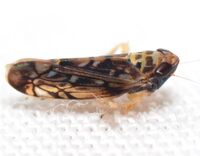 | Photo by: Kyle Kittelberger, Brian Bockhahn
Polk Co.
Comment: 1 male, 1 female ( mm) | 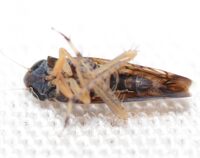 | Photo by: Kyle Kittelberger, Brian Bockhahn
Polk Co.
Comment: 1 male, 2 female |
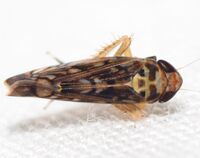 | Photo by: Kyle Kittelberger, Brian Bockhahn
Polk Co.
Comment: 1 male, 1 female ( mm) | 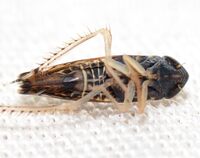 | Photo by: Kyle Kittelberger, Brian Bockhahn
Polk Co.
Comment: 1 male, 1 female (5.3 mm) |
 | Photo by: Kyle Kittelberger, Brian Bockhahn
Polk Co.
Comment: 1 male, 1 female (5.3 mm) |  | Photo by: Kyle Kittelberger, Brian Bockhahn
Polk Co.
Comment: 1 male, 1 female (5.3 mm) |
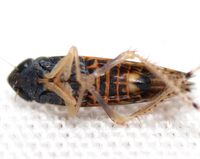 | Photo by: Kyle Kittelberger, Brian Bockhahn
Polk Co.
Comment: female, mm |  | Photo by: Kyle Kittelberger, Brian Bockhahn
Polk Co.
Comment: female, 5.5 mm |
 | Photo by: Kyle Kittelberger, Brian Bockhahn
Polk Co.
Comment: female, 5.5 mm | 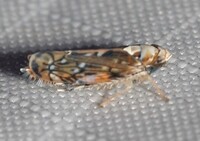 | Photo by: Rob Van Epps
Mecklenburg Co.
Comment: Attracted to UV light. |
 | Photo by: Rob Van Epps
Mecklenburg Co.
Comment: Attracted to UV light. |

 »
»